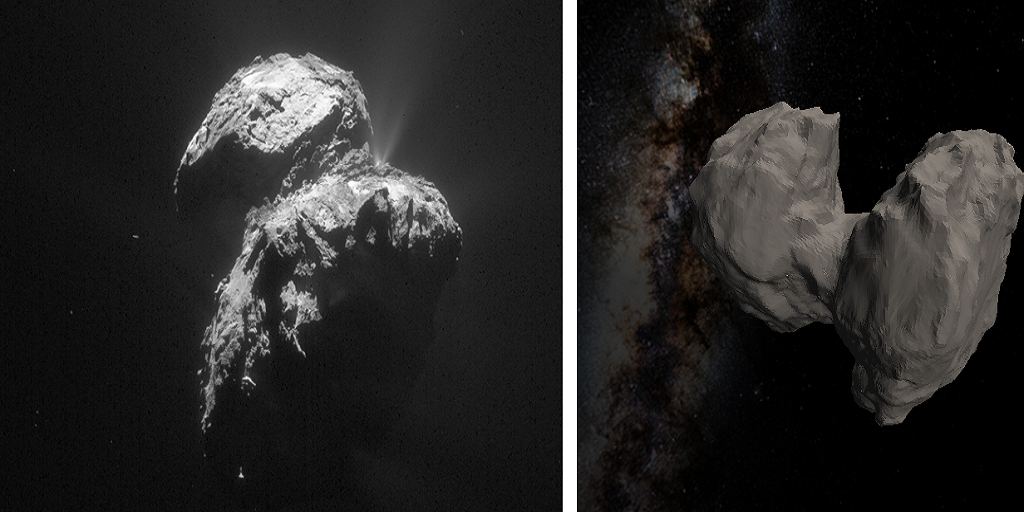I remember the first time I saw a comet. People had been talking about the upcoming appearance of the comet Hale-Bopp for days; it was expected to be the brightest, most visible comet anyone had seen in years. Being a kid at the time, I had no idea what an actual comet would look like; I was expecting a massive fireball to go streaking across the sky. When I saw that it was actually just a small smudge of light among the stars, I was a bit disappointed. I now know, years later, that I had witnessed something amazing.
The Rosetta orbiter was launched in 2004, and will end its mission next September in dramatic fashion, when it will crash into the comet. The crash landing is expected to reveal more detailed information than ever before, as the orbiter will continue to gather data as it descends towards 67P’s surface. Until then, you can print out the most accurate and detailed representation of 67P to date by accessing the files here. If you don’t have access to a 3D printer, you can still have fun with the comet by checking out this interactive 3D visualization tool, which lets you zoom in, see different angles, and look at the pictures taken by Rosetta from each point in its orbit. You can also see all of the images taken so far at the ESA’s Archive Image Browser.
When I saw my first comet, the only sort of celestial replicas I had were the glow in the dark stickers of comets, planets and stars that I had put all over my ceiling. I never imagined, at that time, that one day I would be able to hold an accurate representation of an actual comet in my hand. Have you downloaded these new models? Let us know in the 3D Printable Rosetta Comet forum thread on 3DPB.com.
